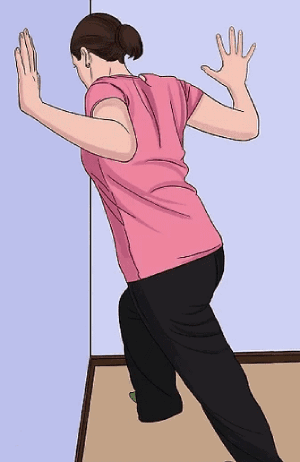Neck pain is a pretty common discomfort that can disrupt our daily routines and hinder our overall well-being. It’s that discomfort that nags at us as we try to focus at work, hampers our ability to unwind, and can even affect our sleep. Whether it’s caused by poor posture, stress, muscle strain, or underlying conditions, finding effective relief and treatment strategies is very essential for restoring comfort and functionality in our lives. In this blog, we are going to explore neck pain, its causes, and practical ways to alleviate the discomfort.
Contents
Understanding Neck Pain: Causes And Discomfort
We all must be familiar with neck pain. To effectively address and manage this discomfort, it’s crucial to understand the factors that contribute to its onset. While the causes of neck pain may vary widely, they usually revolve around our modern lifestyle, daily habits, and even underlying health conditions.
- Muscle Tension and Poor Posture: In this current day and age, it’s common to spend extended hours hunched over computers, or phones. This prolonged posture can strain the muscles in our neck and upper back, leading to tension and discomfort. Poor posture exacerbates the issue, as the weight of the head isn’t evenly distributed, putting additional stress on certain muscles.
- Stress and Emotional Factors: Stress, anxiety, or other emotional tension can have physical effects, often in the form of muscle tightness. The neck, being a common area for storing stress-related tension, can become a hotspot for discomfort.
- Physical Strain and Overuse: Engaging in repetitive activities can lead to a strained neck, such as lifting heavy objects, which can cause neck pain. Additionally, performing tasks like painting a ceiling or gardening for extended periods can contribute to neck pain.
- Injury and Trauma: Sudden impacts, accidents, or falls, can result in neck injuries, such as whiplash. These incidents can lead to muscle strain, ligament sprains, or even more severe damage to the cervical spine.
- Degenerative Changes: Now, as we age, wear and tear on the cervical spine can lead to conditions like osteoarthritis or herniated discs. These degenerative changes can cause chronic neck pain, limited mobility, and discomfort.
- Sleeping Position: The way we sleep can impact our neck health. Sleeping on a pillow that doesn’t adequately support the neck’s natural curve can strain the muscles and lead to morning discomfort.
At-Home Strategies for Neck Pain Relief
It’s not necessary to run to a doctor immediately upon the arrival of neck pain. It is possible to treat neck pain even at home. Here are some simple yet effective at-home remedies to ease neck discomfort and regain your range of motion:
- Rest and Avoid Strain: It is important to give your neck a break from activities that might worsen the pain, such as heavy lifting or prolonged use of electronic devices. Using supportive pillows that maintain the natural curve of your neck while sleeping could also be extremely helpful.
- Heat and Cold Therapy: Applying a warm compress or heating pad to your neck for about 15-20 minutes can help relax tense muscles. Alternatively, you can use a cold pack or ice wrapped in a cloth for about 15 minutes to reduce inflammation.
- Gentle Neck Stretches: Perform gentle neck stretches to improve flexibility and relieve tension. Slowly tilt your head to each side, forward, and backward, holding each stretch for a few seconds.
- Posture Awareness: Maintain good posture, especially while sitting or standing for extended periods. Keeping your computer monitor at eye level and adjusting your chair supports a neutral spine position.
- Neck Exercises: Perform gentle neck exercises as recommended by a physical therapist to improve strength and range of motion.
- Self-Massage: Gently massage the muscles around your neck and shoulders using your fingers or a tennis ball to alleviate tension. Use circular motions and apply gentle pressure.
- Relaxation Techniques: Practice relaxation techniques such as deep breathing, meditation, or progressive muscle relaxation to reduce stress and muscle tension.
- Hydration and Nutrition: Stay hydrated to maintain healthy muscles and tissues. Consume a balanced diet rich in nutrients to support overall muscle health.
- Over-the-Counter Pain Relief: Non-prescription pain relievers like ibuprofen or acetaminophen can help manage pain and reduce inflammation.
Exercises For Neck Pain Relief
Engaging in targeted exercises can help alleviate neck pain by improving posture, strengthening muscles, and promoting flexibility. Here are some effective exercises for neck pain relief:
Neck Stretches
- Gently tilt your head to one side, bringing your ear toward your shoulder. Hold for 15-30 seconds on each side.
- Slowly tilt your head forward, bringing your chin toward your chest. Hold for 15-30 seconds.
- Tilt your head backward, looking toward the ceiling. Hold for 15-30 seconds.
Neck Rotation
- Turn your head to one side, looking over your shoulder.
- Hold for 15-30 seconds on each side.
Chin Tucks
- Sit or stand with your back straight.
- Gently tuck your chin in toward your neck, as if creating a double chin.
- Hold for a few seconds and then release.
- Perform 10-15 repetitions.
Shoulder Blade Squeezes
- Sit or stand with your arms by your sides.
- Squeeze your shoulder blades together as if trying to hold a pencil between them.
- Hold for a few seconds and then release.
- Perform 10-15 repetitions.
Levator Scapulae Stretch
- Sit or stand with one hand behind your back.
- Tilt your head to the opposite side and gently pull your head down with your opposite hand.
- You should feel a stretch along the side of your neck.
- Hold for 15-30 seconds on each side.
Pectoral Stretch
- Stand facing a corner of a room.
- Place your forearms against the wall at shoulder height and gently lean forward.
- You should feel a stretch in your chest and front shoulder muscles.
- Hold for 20-30 seconds.
Neck Retraction with Resistance
- Place your hand against your forehead.
- Gently push your forehead into your hand while simultaneously pushing your hand against your forehead.
- You should feel the muscles at the back of your neck engaging.
- Hold for a few seconds and then release.
- Perform 10-15 repetitions.
How Can Neck Pain Be Treated?
When it comes to alleviating neck pain, the path to relief is paved with a variety of treatment options. The approach you choose will depend on the severity of your discomfort and its underlying causes. Here are some treatment strategies available to help you bid farewell to neck pain and regain your comfort.
- Physical Therapy: A physical therapist can create a customized exercise program to strengthen neck muscles, improve posture, and enhance flexibility. They may also use techniques like manual therapy to alleviate discomfort.
- Massage Therapy: Professional massages can help relax tense muscles, improve circulation, and reduce pain. A skilled massage therapist can target specific areas of tension in the neck and upper back.
- Chiropractic Care: Chiropractors specialize in spinal adjustments that aim to realign the spine and alleviate pain caused by misalignment. This can be particularly beneficial for those with neck pain resulting from poor spinal alignment.
- Medications: Over-the-counter pain relievers, for example, non-prescription pain relievers like ibuprofen or acetaminophen can provide temporary relief. These can also help with inflammation. Apart from that, in cases where muscle tension is a significant contributor to neck pain, muscle relaxants prescribed by a healthcare professional can help ease discomfort.
- Ergonomic Changes: Whether you are at work or home, ensuring that your workspace is ergonomically designed can significantly help minimize strain on your neck. You can adjust the height of your computer screen, use a supportive chair, and keep your keyboard at a level comfortable for you.
- Regular Movement: Taking breaks to stretch and move throughout the day can prevent muscle stiffness and reduce the risk of neck pain caused by prolonged sitting.
- Supportive Pillow: Choosing a pillow that supports the natural curve of your neck can help maintain proper alignment during sleep. A cervical pillow is designed specifically for this purpose.
Preventing Neck Pain
Preventing neck pain involves adopting healthy habits that support the well-being of your neck and surrounding muscles. Incorporating these strategies into your daily routine can help reduce the risk of developing neck pain. Here are some practical neck pain prevention tips:
- Maintain Good Posture: Sit and stand with your shoulders back and your spine aligned. Avoid slouching or leaning your head forward while working on a computer or using electronic devices.
- Ergonomic Workspace: Set up your workstation ergonomically to promote proper posture and reduce strain on your neck and shoulders. Use a chair that provides lumbar support and position your computer monitor at eye level.
- Regular Breaks: Take short breaks to stretch and change positions if you have a sedentary job or spend long periods in front of a computer.
- Use Supportive Pillows: Choose pillows that provide appropriate support for your head and neck while sleeping. Avoid pillows that are too high or too flat, as they can strain your neck muscles.
- Proper Sleep Position: Sleep on your back or side with a pillow that supports the natural curve of your neck. Avoid sleeping on your stomach, as it can strain your neck and spine.
- Regular Exercise: Engage in regular physical activity to strengthen your neck and back muscles. Incorporate exercises that improve neck flexibility and stability.
- Stretching Routine: Perform gentle neck stretches to maintain flexibility and prevent muscle stiffness. Avoid sudden, forceful movements during stretching.
- Mind-Body Techniques: Practice stress-reduction techniques such as meditation, deep breathing, and yoga to prevent tension-related neck pain.
- Limit Mobile Device Usage: Hold electronic devices at eye level to avoid straining your neck. Take breaks from prolonged device use and practice good posture.
- Regular check-ups: Regular visits to a chiropractor, physical therapist, or healthcare provider can help identify and address potential issues before they escalate.
Conclusion
In conclusion, dealing with neck pain can be a challenging experience, but there is a range of effective strategies available for both relief and treatment. Whether you’re seeking immediate relief from discomfort or looking to address the underlying causes of your neck pain, taking a comprehensive approach can help you regain comfort and restore your quality of life.
From at-home remedies like heat and cold therapy, gentle stretches, and posture correction, to seeking professional guidance through physical therapy, medication, or even surgical intervention in severe cases, there are tailored solutions to fit every individual’s needs.
If you’re experiencing Neck pain, physical therapy for neck pain at PhysioMantra can help: Book an online physical therapy session.










